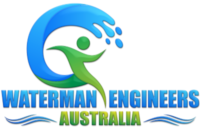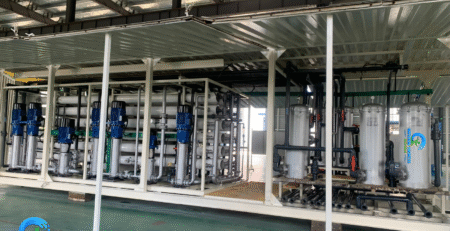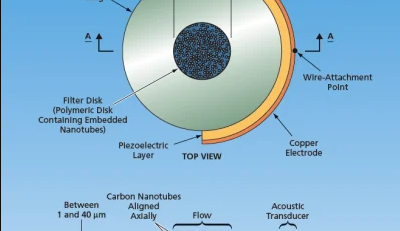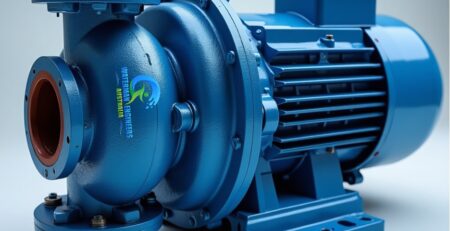Slaughterhouses, Rendering facilities, and Abattoirs Effluents parameters to be treated
-
Slaughterhouses, Rendering facilities, and Abattoirs Effluents parameters to be treated
Effluent from slaughterhouses, rendering facilities, and abattoirs is highly polluted and requires rigorous treatment before discharge or reuse. The wastewater typically contains a mix of organic matter, fats, oils, grease, and nutrients. Here are the key parameters that need to be treated:
🔬 Typical Effluent Parameters in Slaughterhouse/Rendering/Abattoir Wastewater
Parameter Typical Range (mg/L) Significance BOD₅ (Biochemical Oxygen Demand) 1,500 – 8,000 High organic load, indicates oxygen demand. COD (Chemical Oxygen Demand) 2,000 – 10,000 Total organic content, including non-biodegradables. TSS (Total Suspended Solids) 800 – 3,000 Includes blood, tissue, and hair residues. TDS (Total Dissolved Solids) 1,000 – 4,000 Includes salts, organics, and small particles. Fats, Oils, and Grease (FOG) 100 – 1,000 Can cause clogging and interfere with treatment. Nitrogen (Total Kjeldahl Nitrogen) 100 – 400 From proteins and urea in animal waste. Ammonia (NH₃-N) 50 – 200 Toxic to aquatic life; needs nitrification. Total Phosphorus 10 – 100 Contributes to eutrophication. pH 6.5 – 8.5 May fluctuate due to cleaning chemicals. Pathogens (E. coli, Salmonella, etc.) Variable Public health risk if untreated. Odor-causing compounds Present (H₂S, VOCs, etc.) Nuisance, may require deodorization. Heavy Metals (Fe, Zn, Cu) Low to moderate Depends on animal feed, equipment corrosion. Chlorides 300 – 1,000 From washing, sanitizing processes. Color and Turbidity High Due to blood, tissue, and fat content. 🧪 Special Contaminants (Rendering Plants Specifically)
- High protein and lipid content
- Volatile organic compounds (VOCs)
- Temperature fluctuations (hot wastewater from cooking)
📌 Treatment Requirements
To effectively treat this effluent, the treatment process typically includes:
- Pre-treatment: Screening, grit removal, FOG traps
- Primary treatment: Sedimentation, flotation (DAF)
- Secondary treatment: Biological (aerobic, anaerobic)
- Tertiary treatment: Nutrient removal, filtration, disinfection
- Sludge handling: Dewatering, digestion, disposal
- Biochemical Oxygen Demand (BOD₅)
- What it is: The amount of oxygen required by microorganisms to biologically decompose organic matter in 5 days.
- Source: Blood, fat, flesh, manure, undigested stomach contents.
- Typical Range: 1,500 – 8,000 mg/L (can be higher during peak slaughtering).
- Why it matters: High BOD depletes oxygen in receiving waters, harming aquatic life. It indicates the organic pollution load and sizing basis for biological treatment units.
- Chemical Oxygen Demand (COD)
- What it is: The total oxygen required to chemically oxidize all organic material (biodegradable + non-biodegradable).
- Source: Proteins, fats, oils, synthetic detergents from cleaning processes.
- Typical Range: 2,000 – 10,000 mg/L.
- Why it matters: COD is usually higher than BOD. It reflects the total potential pollution and is critical for sizing physical-chemical treatment stages.
- Total Suspended Solids (TSS)
- What it is: Undissolved particles that remain suspended in wastewater.
- Source: Hair, tissue, bone fragments, stomach contents, blood clots.
- Typical Range: 800 – 3,000 mg/L.
- Why it matters: TSS clogs pipes, overloads settling tanks, and interferes with biological treatment. High TSS indicates need for effective screening and clarification.
- Total Dissolved Solids (TDS)
- What it is: Dissolved salts and organic/inorganic matter in water.
- Source: Blood, sanitizers, meat juices, wash water chemicals.
- Typical Range: 1,000 – 4,000 mg/L.
- Why it matters: High TDS can impact reuse potential and increase salinity in discharge water, affecting crops or groundwater recharge.
- Fats, Oils, and Grease (FOG)
- What it is: Lipid-rich substances that float or emulsify in wastewater.
- Source: Fatty tissues, skin, internal organs, rendering processes.
- Typical Range: 100 – 1,000 mg/L.
- Why it matters: FOG solidifies in pipelines, reduces biological activity, and forms scum layers. Needs removal via grease traps or dissolved air flotation.
- Total Kjeldahl Nitrogen (TKN)
- What it is: Total concentration of organic nitrogen and ammonia.
- Source: Proteins in blood, tissue, stomach contents, urea from urine.
- Typical Range: 100 – 400 mg/L.
- Why it matters: Leads to ammonia and nitrate formation, which are toxic to aquatic life and promote eutrophication. Treated via nitrification-denitrification.
- Ammonia (NH₃-N)
- What it is: A reduced form of nitrogen toxic to aquatic life.
- Source: Degradation of urea and proteins.
- Typical Range: 50 – 200 mg/L.
- Why it matters: High ammonia can kill fish and restrict discharge to water bodies. Needs biological treatment (nitrification) or stripping at high pH.
- Phosphorus (Total P)
- What it is: Nutrient promoting algae growth in water bodies.
- Source: Blood, bone, feces, and some cleaning agents.
- Typical Range: 10 – 100 mg/L.
- Why it matters: Excess phosphorus causes eutrophication and algal blooms. Removed through chemical precipitation or enhanced biological phosphorus removal (EBPR).
- pH
- What it is: Measure of acidity or alkalinity.
- Source: Cleaning chemicals, blood decomposition (can make it slightly alkaline or acidic).
- Typical Range: 6.5 – 8.5 (but can fluctuate with chemical use).
- Why it matters: Extremes in pH affect microbial activity and corrosion. Must be adjusted for biological processes and discharge standards.
- Pathogens (Bacteria, Viruses, Parasites)
- What it is: Disease-causing microorganisms (e.g., E. coli, Salmonella, Listeria).
- Source: Animal feces, intestines, blood.
- Why it matters: Public health hazard if reused or discharged untreated. Requires disinfection (e.g., chlorine, UV, ozone).
- Odor-Causing Compounds
- What it is: Volatile organic compounds (VOCs), hydrogen sulfide (H₂S), ammonia.
- Source: Anaerobic decomposition of proteins, fats.
- Why it matters: Nuisance to communities and health hazard to workers. Requires deodorization systems (biofilters, scrubbers, aeration).
- Heavy Metals (e.g., Fe, Zn, Cu)
- What it is: Trace metals from equipment, additives, or animal feed.
- Source: Corrosion, sanitizing chemicals.
- Typical Levels: Low to moderate, but Fe and Zn may be elevated.
- Why it matters: Can be toxic to aquatic life and may affect downstream reuse (e.g., irrigation, agriculture).
- Chlorides and Salts
- What it is: Inorganic salts.
- Source: Cleaning/sanitization chemicals, blood.
- Typical Range: 300 – 1,000 mg/L.
- Why it matters: Impacts soil and water salinity, especially critical in reuse or discharge to inland waters.
- Color and Turbidity
- What it is: Visual contaminants reducing water clarity.
- Source: Blood, fine particles, emulsified fats.
- Why it matters: Aesthetic concern, interferes with light penetration in water bodies, affects filtration and disinfection.
⚠️ Difficult-to-Treat Parameters
- Fats, Oils, and Grease (FOG)
- Why it’s difficult:
- FOG can emulsify with detergents used in cleaning, making it hard to separate with conventional settling.
- Forms scum layers in tanks, reducing oxygen transfer in biological systems.
- If not removed early, FOG clogs pipes, pumps, and diffusers, and inhibits biological activity.
- Treatment Challenges:
- Requires physical methods (grease traps, DAF) and sometimes chemical dosing (coagulants) to destabilize emulsions.
- Needs regular maintenance to prevent buildup and odor issues.
- Total Kjeldahl Nitrogen (TKN) and Ammonia (NH₃-N)
- Why it’s difficult:
- High protein content in effluent leads to elevated TKN, which degrades into ammonia.
- Ammonia is toxic to aquatic life and regulations for discharge limits are strict.
- Treatment Challenges:
- Requires a two-step biological process:
- Nitrification (aerobic): Converts ammonia to nitrate.
- Denitrification (anoxic): Converts nitrate to nitrogen gas.
- These processes require:
- Precise oxygen and mixing control.
- Long retention times.
- Good temperature and pH conditions.
- Can be upset by FOG, toxic loads, or shock loading from batch slaughtering.
- Phosphorus (Total P)
- Why it’s difficult:
- Present in organic forms (e.g., proteins, bones) and inorganic forms.
- Cannot be removed by basic sedimentation or biological treatment alone.
- Treatment Challenges:
- Requires chemical precipitation (e.g., alum, ferric chloride) or advanced biological phosphorus removal (EBPR).
- EBPR is sensitive to operational conditions like sludge age, anaerobic/aerobic cycles, and carbon availability.
- Sludge disposal becomes complex due to metal-phosphate compounds.
- Odor-Causing Compounds (e.g., H₂S, VOCs)
- Why it’s difficult:
- Volatile sulfur compounds and fatty acids are produced under anaerobic conditions, especially in rendering wastewater.
- Odors pose a community nuisance and health hazard, even at very low concentrations.
- Treatment Challenges:
- Requires air treatment systems (biofilters, chemical scrubbers).
- Wastewater must be kept aerobic to suppress odor generation.
- Anaerobic lagoons or poorly managed EQ tanks can lead to chronic odor issues.
- Fecal Pathogens (e.g., E. coli, Salmonella)
- Why it’s difficult:
- Presence in high concentrations due to animal intestines, feces, and blood.
- Resistant strains may be antibiotic-tolerant.
- Treatment Challenges:
- Requires reliable disinfection: chlorination, UV, or ozone.
- High turbidity and color reduce disinfection efficiency.
- UV systems need low suspended solids and high clarity—often not feasible without pre-polishing.
- Emulsified and Colloidal Organics
- Why it’s difficult:
- Includes emulsified blood proteins, fats, and fine particulates that escape settling.
- Treatment Challenges:
- Difficult to coagulate/settle without chemicals.
- Requires DAF with coagulants/flocculants, increasing operating costs.
- If not removed early, they load biological systems heavily and increase sludge production.
⚠️ Moderately Challenging Parameters
These are not inherently hard to treat, but become difficult under certain circumstances:
Parameter Treatment Notes COD High COD may include non-biodegradable organics from detergents and rendering. Advanced oxidation may be needed. TSS Easy to remove if coarse, but becomes difficult when colloidal or bound with FOG/protein. Color From blood and organics; difficult to remove completely without tertiary polishing (e.g., carbon filtration, advanced oxidation). pH Can be managed by neutralization, but rapid fluctuations (e.g., post-cleaning) can shock biological processes. ✅ Easier Parameters to Treat
These parameters are usually well-managed with standard treatment systems:
- BOD₅: Biologically degradable with activated sludge, UASB, or lagoons.
- Turbidity: Reduced with TSS and FOG removal.
- Metals (Fe, Zn): Typically low and manageable through precipitation or filtration.
- Chlorides: Difficult to remove but not always regulated unless reuse is intended.
Summary Table
Parameter Treatment Difficulty Reason FOG ⚠️ High Emulsification, biological inhibition TKN & Ammonia ⚠️ High Multi-stage biological, sensitive process Phosphorus ⚠️ High Needs chemical or advanced bio removal Odors (H₂S, VOCs) ⚠️ High Low threshold, community sensitivity Pathogens ⚠️ Moderate–High Requires polishing & effective disinfection Emulsified organics ⚠️ High Resists settling, increases COD/BOD load BOD, COD ✅ Moderate Needs good biological design TSS, pH ✅ Low–Moderate Manageable with screening & buffering - High protein and lipid content











